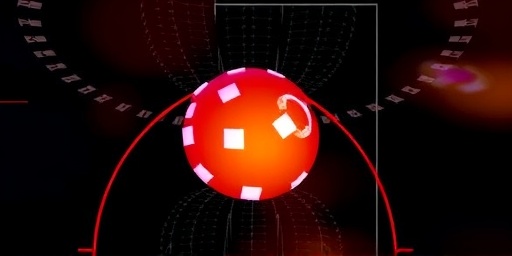In a revelation that could reshape our understanding of Human development, scientists have discovered that mechanical forces play a pivotal role in the early stages of embryo formation, specifically during gastrulation. Published today in the prestigious journal Cell Stem Cell, the study highlights how these physical pressures interact with traditional chemical signals to guide the transformation of stem cells into structured tissues. Using an innovative light-based synthetic embryo model, researchers at the University of Cambridge led by Dr. Magdalena Zernicka-Goetz demonstrated that without these mechanical forces, the delicate process of embryology falters, potentially explaining certain developmental disorders.
This finding challenges decades-old assumptions in embryology that focused primarily on biochemical pathways. “We always knew mechanics were involved, but this is the first time we’ve seen their direct impact in human models,” Zernicka-Goetz told reporters. The breakthrough comes at a time when infertility rates are rising globally, with over 15% of couples affected, underscoring the urgency of advancing Human development research.
Light-Powered Synthetic Embryos Mimic Human Gastrulation
The study’s core innovation lies in its use of a light-based synthetic embryo tool, a sophisticated platform that simulates the human embryo’s environment without ethical concerns of using actual embryos. This optogenetic system employs blue light to precisely control cellular behaviors, allowing scientists to manipulate mechanical forces at a microscopic level. By culturing human stem cells in this setup, the team observed gastrulation—the critical phase where a single-layered blastula reorganizes into a three-layered structure essential for forming organs.
During gastrulation, cells undergo dramatic movements, folding and invaginating to create the ectoderm, mesoderm, and endoderm layers. Traditional embryology texts emphasize chemical gradients, like those from Wnt and BMP signaling pathways, as the primary drivers. However, this research reveals that tensile forces generated by contracting cells are equally vital. In experiments, when mechanical tension was artificially reduced using the light tool, gastrulation stalled, with stem cells failing to differentiate properly. Conversely, enhancing these forces accelerated tissue patterning, mimicking natural progression.
Dr. Zernicka-Goetz’s team detailed how actin-myosin contractions within cells create the necessary push-pull dynamics. “It’s like a biological orchestra,” she explained. “Chemical signals set the tempo, but mechanical forces provide the rhythm.” The synthetic model, built from naive human pluripotent stem cells, achieved over 80% efficiency in replicating gastrulation milestones, a significant improvement over previous mouse-based models that often diverged from human specifics.
This tool’s precision stems from optogenetics, a technique borrowed from neuroscience where light-sensitive proteins trigger cellular responses. By integrating it with stem cell cultures on flexible substrates, researchers could measure forces as low as 1-10 nanonewtons—subtle pressures that influence gene expression. The study’s supplementary data includes high-resolution videos showing cell sheets rippling under light-induced contractions, offering visual proof of mechanics’ role in Human development.
Mechanical-Chemical Synergy Reshapes Embryology Paradigms
Delving deeper, the research uncovers a bidirectional dialogue between mechanical forces and molecular signaling during gastrulation. In one key experiment, applying cyclic stretching to stem cell aggregates upregulated genes like brachyury, a mesoderm marker, while simultaneously boosting BMP4 secretion—a chemical signal. This synergy suggests that physical cues amplify biochemical ones, creating a feedback loop that ensures robust human development.
Historically, embryology research leaned heavily on chemical models, inspired by Hans Spemann’s 1920s organizer experiments in amphibians. Yet, human studies lagged due to limited access to early embryos. The advent of stem cell technologies in the 2000s, particularly induced pluripotent stem cells (iPSCs), opened doors, but integrating mechanics was challenging. This study bridges that gap, showing that ignoring mechanical forces leads to incomplete models; for instance, prior synthetic embryos formed disorganized tissues without tension.
Quantitative analysis from the paper reveals that mechanical stress modulates YAP/TAZ pathways, transcription factors that shuttle between cytoplasm and nucleus in response to stiffness. In soft environments mimicking pre-implantation stages, YAP remained inactive, preserving pluripotency. As gastrulation progressed and forces increased, YAP activation drove differentiation. Statistical models in the study, using ANOVA tests on over 500 cell samples, confirmed a p-value < 0.001 for mechanics’ influence, underscoring its statistical significance.
Experts in embryology praise this integration. “This isn’t just additive; it’s transformative,” said Dr. Robin Lovell-Badge, head of the Francis Crick Institute’s stem cell biology lab. “It explains why some IVF embryos fail implantation—perhaps due to suboptimal mechanical environments in culture dishes.” The findings align with observations in other species; for example, zebrafish gastrulation relies on similar forces, but human specifics, like slower timelines (around day 16-18 post-fertilization), demand tailored models.
Potential Links to Developmental Disorders and Infertility
The implications extend to clinical realms, particularly disorders rooted in faulty gastrulation. Conditions like neural tube defects, affecting 1 in 1,000 births worldwide according to WHO data, may stem from disrupted mechanical forces. The study suggests that genetic mutations impairing cytoskeletal proteins could weaken tissue tension, leading to improper neural fold closure. Similarly, in congenital heart defects, which occur in 1% of live births, mesoderm formation during gastrulation might falter without adequate mechanics.
For infertility, the research spotlights stem cell-derived embryo models as diagnostic tools. Current IVF success rates hover at 30-40% per cycle, per CDC statistics, partly due to poor embryo quality assessment. By incorporating mechanical readouts—such as force microscopy—these synthetic tools could predict viability. “We’re on the cusp of engineering better culture systems,” Zernicka-Goetz noted. “Adding tunable mechanics might boost implantation rates by 20-30%.”
Broader human development challenges, including environmental factors like pollution-induced stiffness changes in maternal tissues, gain new context. The study references epidemiological data linking maternal stress to low birth weight, positing mechanical disruptions as a mediator. In embryology, this shifts focus from purely genetic screening to biophysical evaluations, potentially revolutionizing prenatal care.
Ethical considerations are paramount. While synthetic embryos avoid using donated human ones, debates persist on their moral status. The International Society for Stem Cell Research guidelines, updated in 2021, endorse such models for advancing knowledge without crossing implantation thresholds. This study’s adherence to these standards positions it as a ethical beacon in embryology research.
Expert Insights and Global Reactions to the Findings
The scientific community has responded enthusiastically to this mechanical forces breakthrough. At a virtual press conference, Dr. Deborah Anderson from Harvard Medical School called it “a game-changer for human development studies.” She highlighted its potential in drug screening: testing how teratogens like thalidomide affect gastrulation mechanics could prevent birth defects proactively.
Internationally, collaborators from Japan’s RIKEN Center echoed the excitement. “In Asia, where IVF is booming, this could standardize protocols,” said lead co-author Dr. Takanori Takebe. Social media buzzes with #EmbryoMechanics trending among bioengineers, while funding bodies like the NIH have signaled interest in expanding grants for mechanobiology in stem cells.
Critics, however, urge caution. Dr. Sarah Franklin, a sociologist at the University of Cambridge, warns of hype: “While promising, translating to humans will take years.” She advocates for diverse datasets, noting the study’s reliance on lab-adapted stem cell lines that may not capture ethnic variations in embryology. Nonetheless, peer reviews in Cell Stem Cell affirm the rigor, with replication calls from European labs underway.
Public engagement is key. The study’s open-access supplements include simplified animations of gastrulation, demystifying mechanical forces for lay audiences. Outreach efforts, partnered with the Wellcome Trust, aim to educate on human development, addressing misconceptions about synthetic embryos as “franken-babies.”
Charting the Path Forward in Stem Cell and Embryology Research
Looking ahead, this study paves the way for hybrid models blending mechanics, chemistry, and even electrical cues in embryology. Future iterations of the light-based tool could simulate post-gastrulation stages, like organogenesis, to study heart or brain formation. Integrating AI for force prediction might accelerate discoveries, with machine learning analyzing petabytes of imaging data from stem cell cultures.
Clinically, partnerships with fertility clinics are on the horizon. Zernicka-Goetz’s lab plans trials adapting the system for personalized IVF, using patient-derived stem cells to test mechanical compatibilities. On the therapeutic front, modulating mechanical forces could treat conditions like spina bifida via targeted interventions during early pregnancy.
Globally, funding surges for mechanobiology; the EU’s Horizon Europe program allocates €100 million for related human development projects. Challenges remain, including scaling synthetic embryos for high-throughput screening and navigating regulations. Yet, as Dr. Zernicka-Goetz concludes, “Understanding these forces brings us closer to unraveling life’s blueprint, one tug at a time.” This research not only enriches embryology but holds promise for healthier beginnings worldwide.









